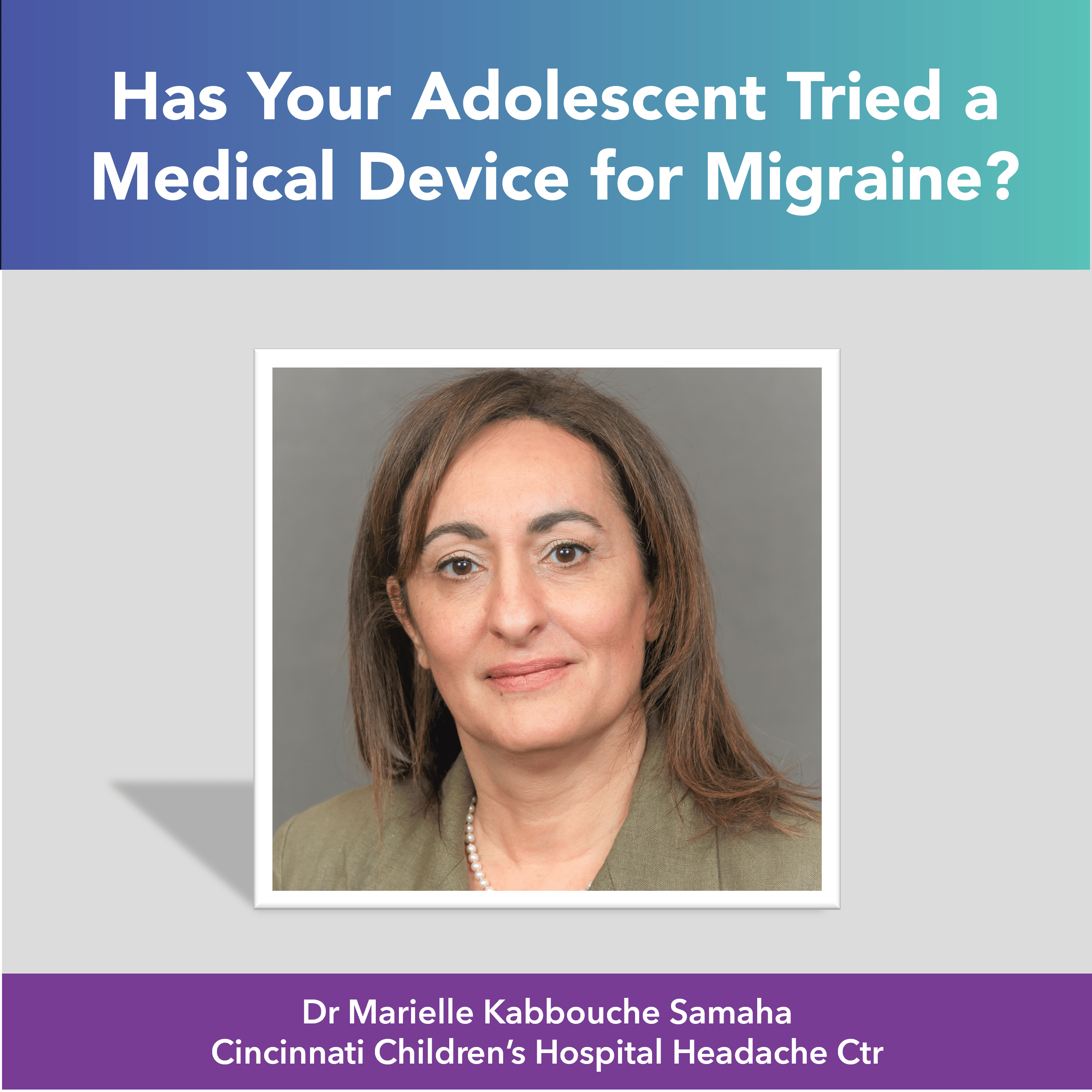Many people experience their first migraine attack before age 18. From limited treatment options, to social isolation, to education-impact, migraine presents adolescents with a great number of challenges during an already complicated time of their lives. Early treatment is essential, as it reduces the risk of disease chronification. Yet, many adolescents and their families are often left struggling to navigate the healthcare system in an attempt to find some relief.
We hope the answers to the questions below shed some light on the struggles adolescents with migraine face, and help guide families on how best to support their child and manage treatment.
Many thanks to our pediatric migraine specialists, Dr. Marielle Kabbouche Samaha and Dr. Shalonda Slater, from Cincinnati Children’s Hospital Headache Center, for their help with this project and answers to questions.
Update: Ajovy has been FDA-approved for the preventive treatment of episodic migraine in children and adolescents, ages 6-17.
Watch Our Adolescents with Migraine Videos
"If we don't catch it, the inflammatory process involved in migraine continues to build up [and] you're at high risk for what we call chronification. That means the migraine attacks are going to become chronic, and very difficult to control. We really need to catch the attacks when they're not frequent, when they have just started."
—Marielle Kabbouche Samaha, MD

Adolescents with Migraine
General Migraine Information
Treatment Options
Life Impact and Lifestyle Modifications
Other Questions
About the Doctors
Dr. Kabbouche is the Director Acute & Inpatient Headache Program, Child Neurologist, Professor UC Dept of Pediatrics. She has been treating children and adolescents with migraine for the last 24 years in the headache center at Cincinnati Children Hospital, and has been the director of the headache center since 2022. Dr. Kabbouche is also involved in different research studies.
Dr. Slater is a Pediatric Psychologist and Professor also at Children’s Hospital Cincinnati where she specializes in the treatment of children and adolescents with chronic pain. She treats children with headaches, abdominal pain, joint pain, sickle cell disease and other conditions. She was inspired to pursue a career in pediatric psychology by her love for working with children, and she wants to help children and adolescents who are dealing with chronic health conditions live full lives and reach their goals.
Cincinnati Children’s Hospital Headache Center
The goal of the headache center is primarily to improve the outcome of pediatric headache, and the disability of the disease.











